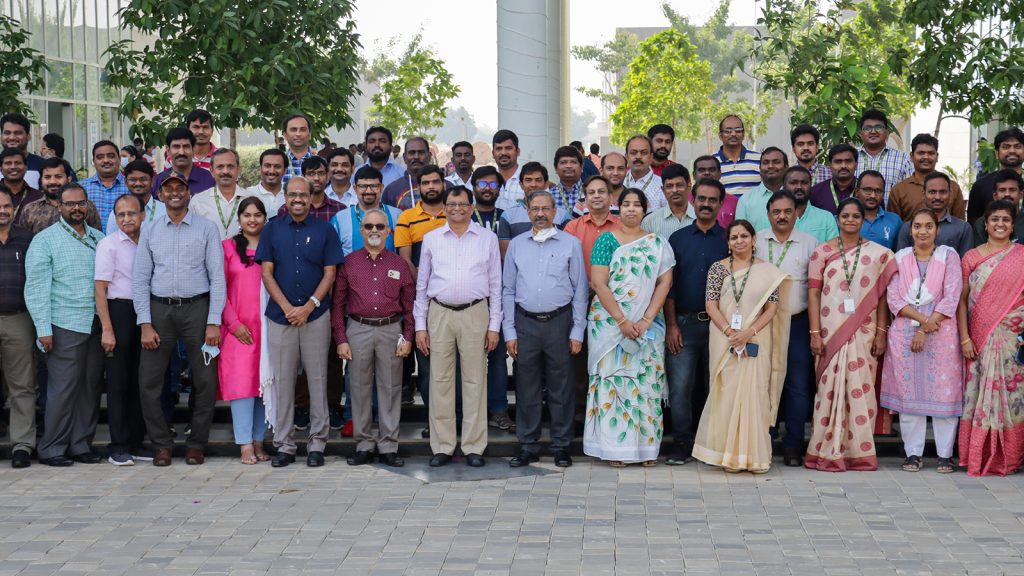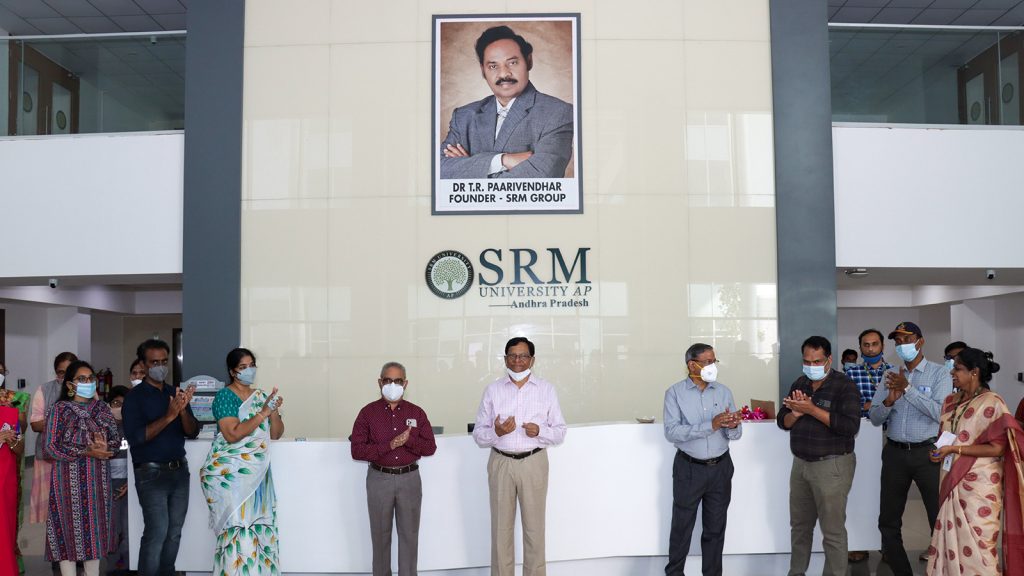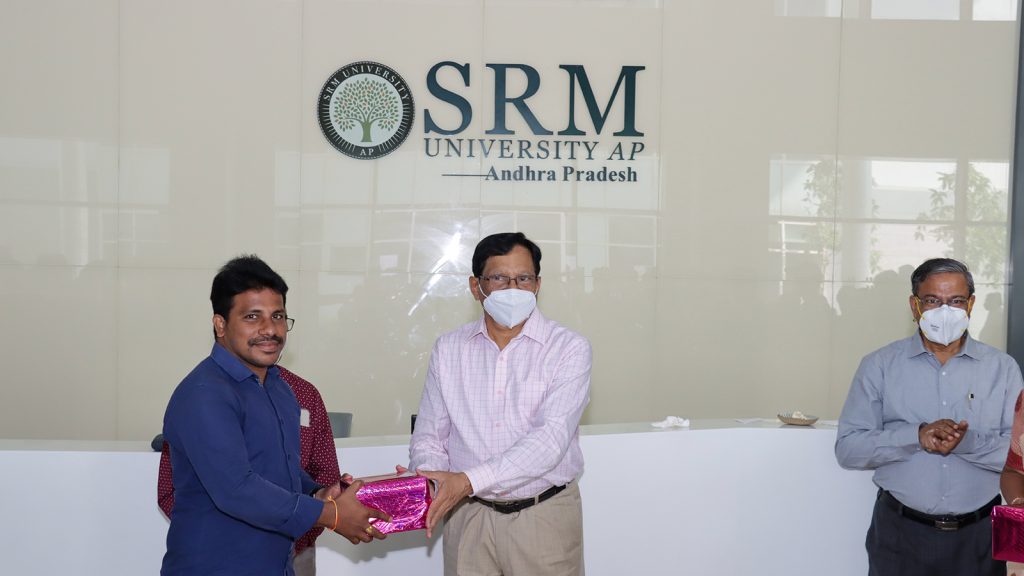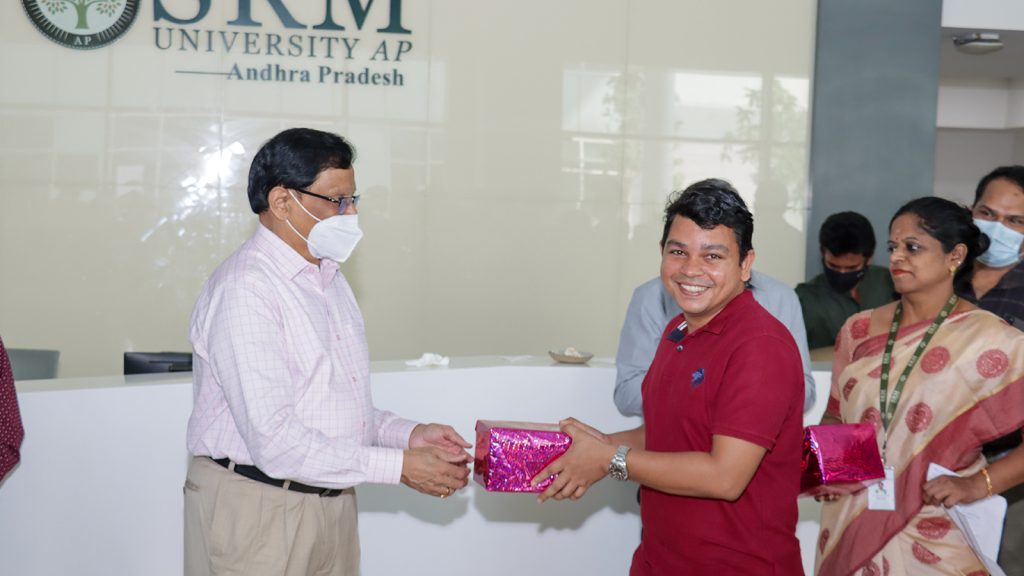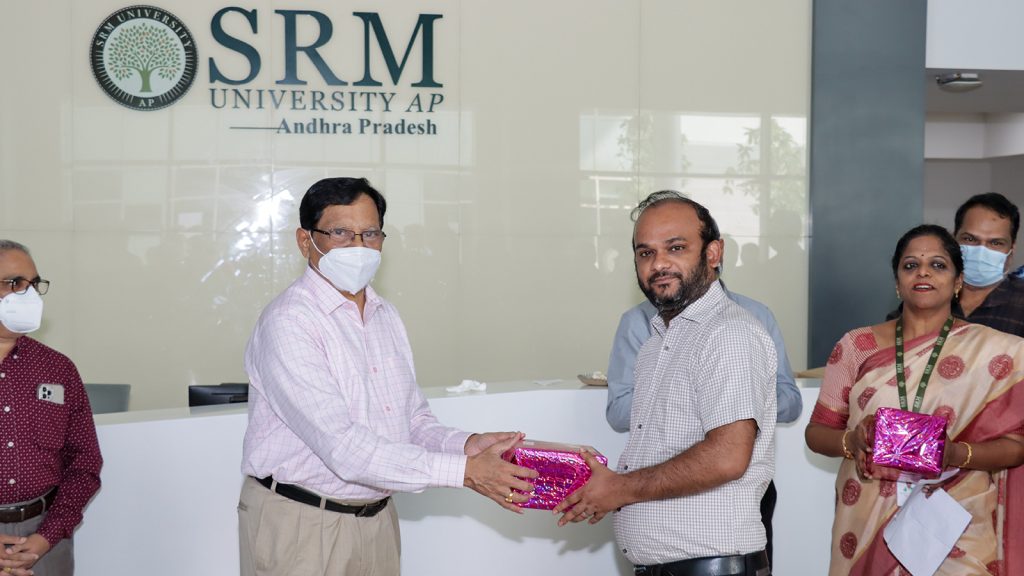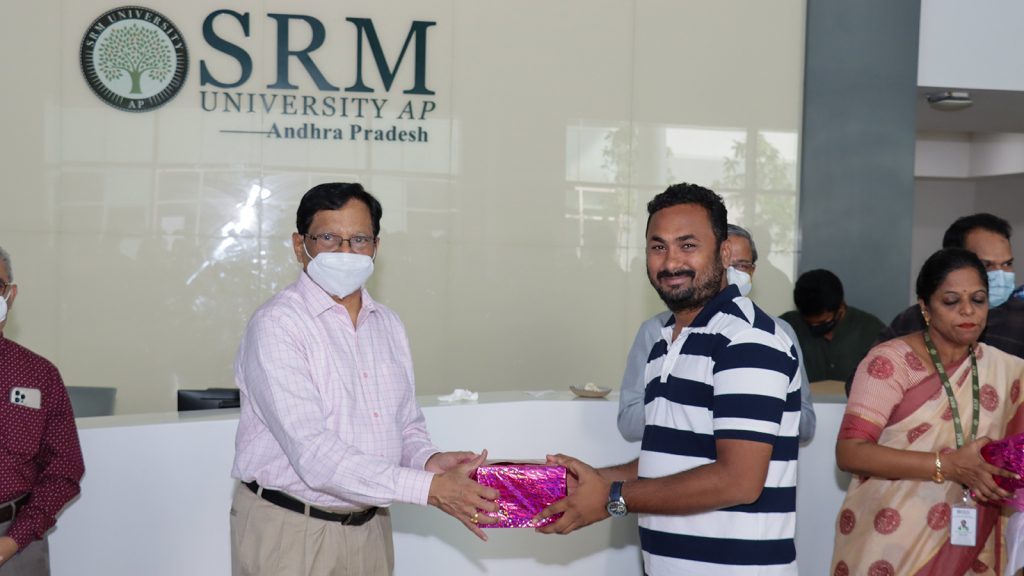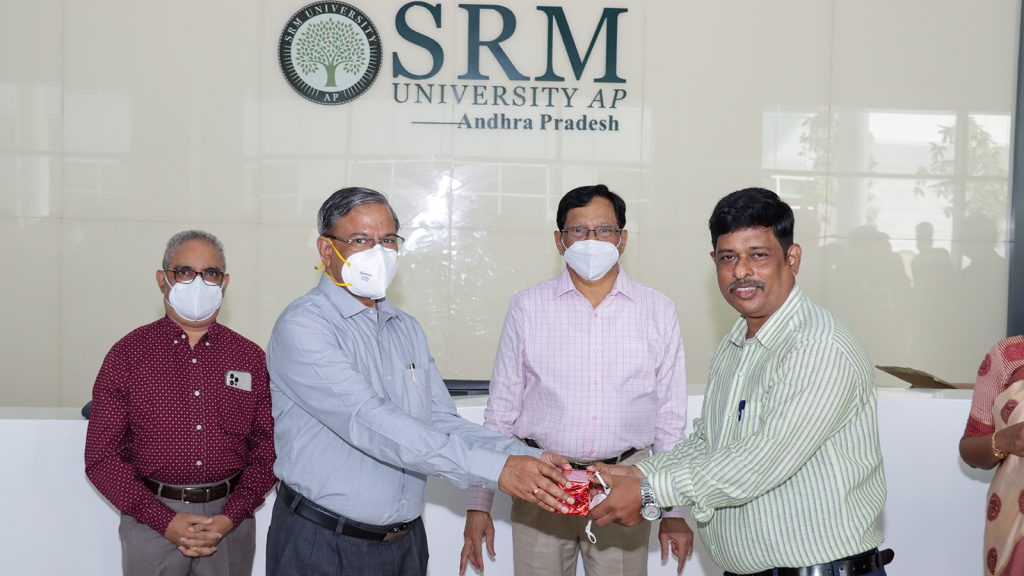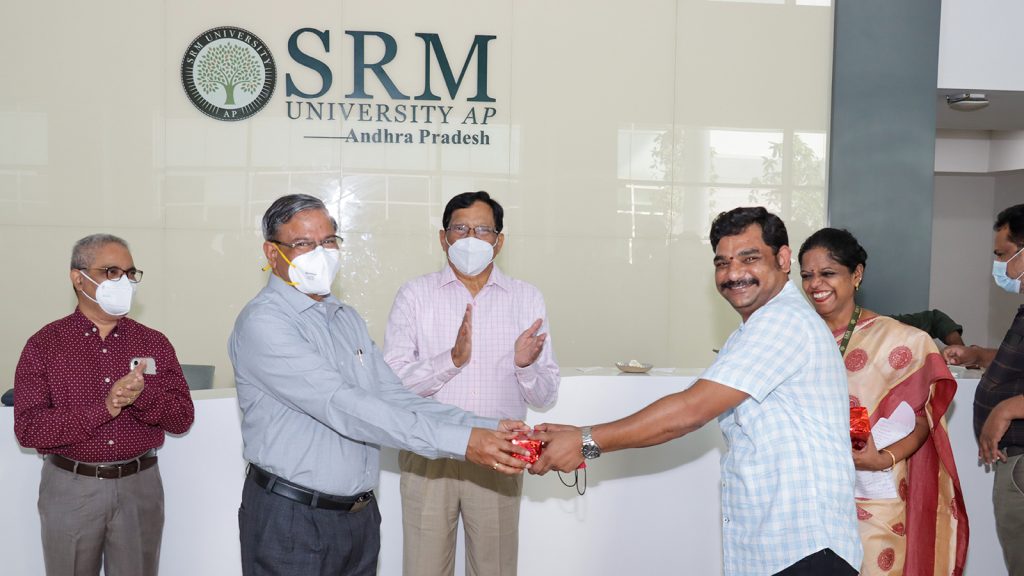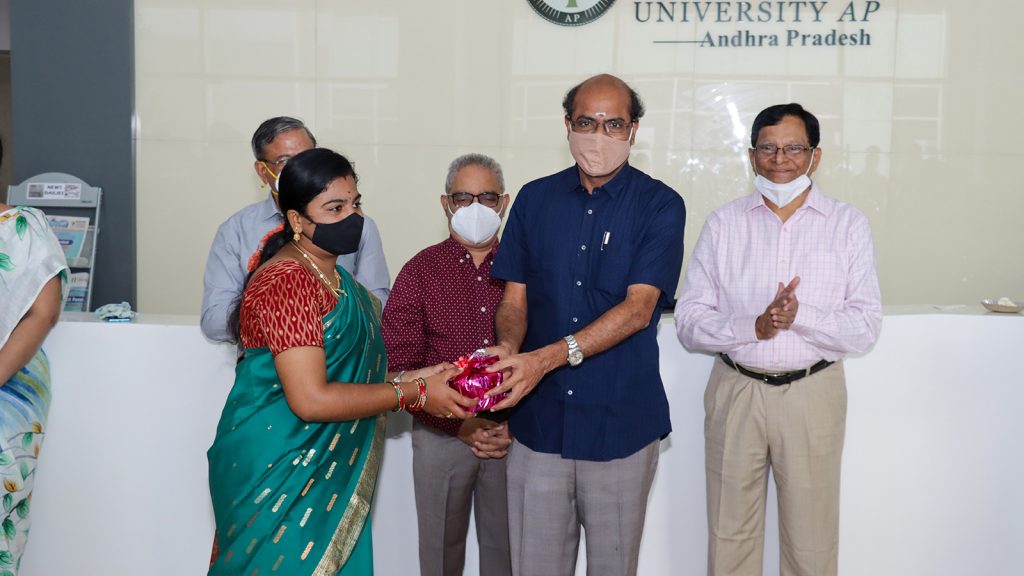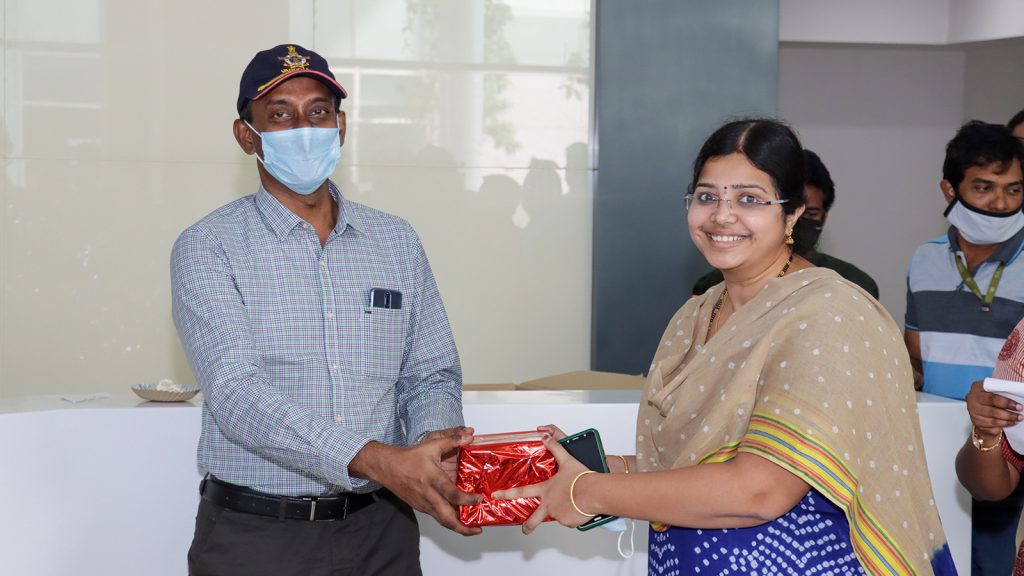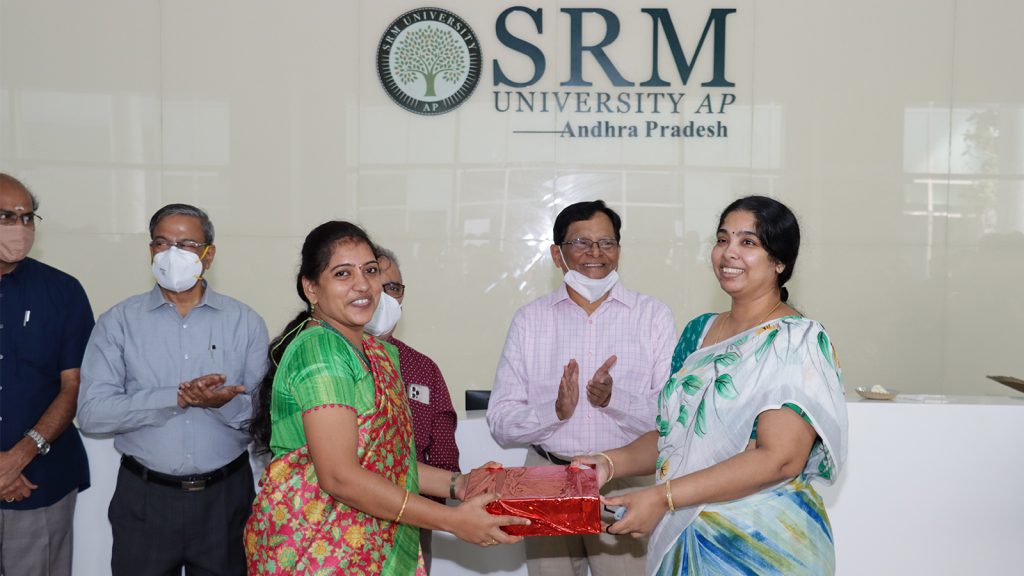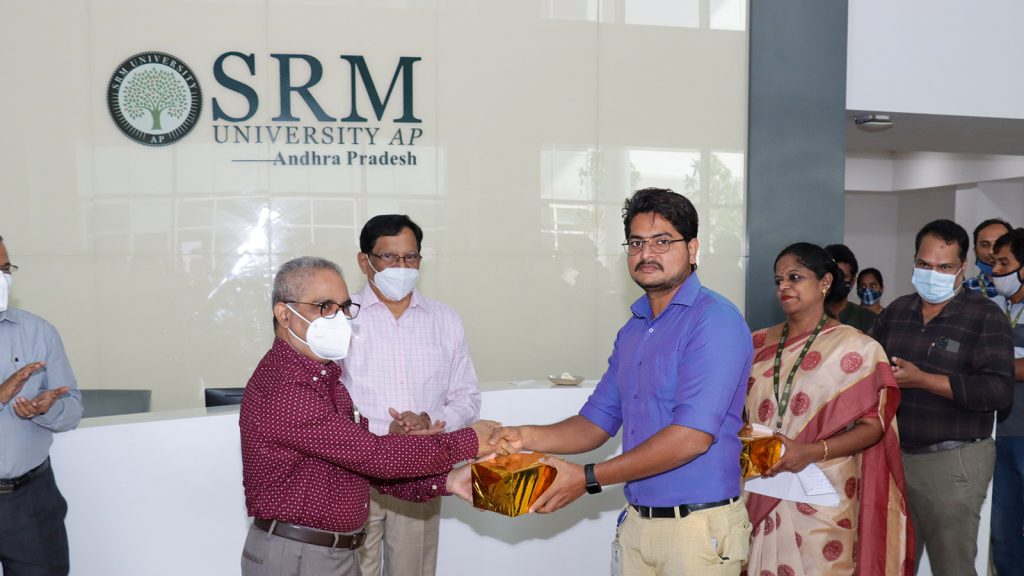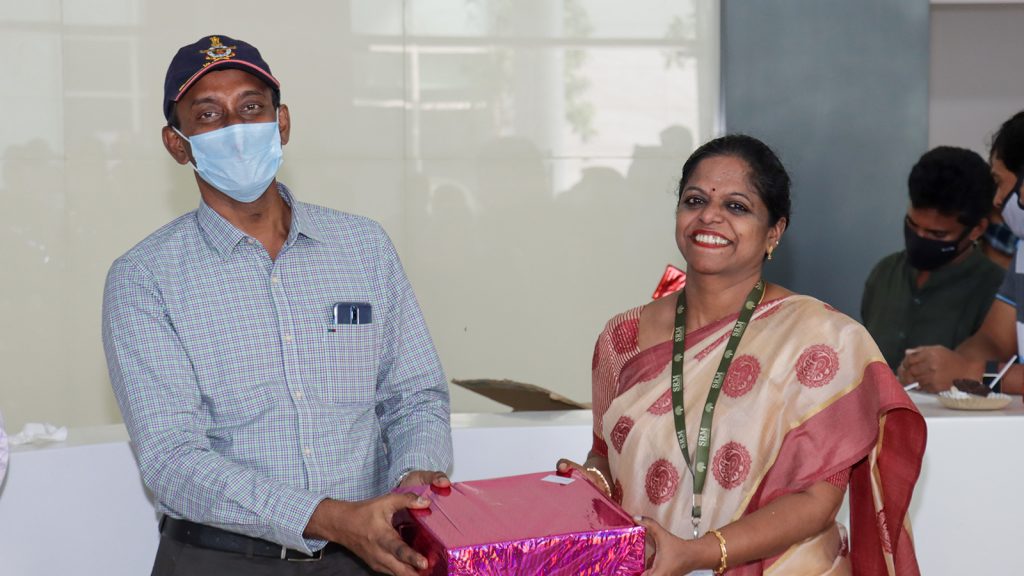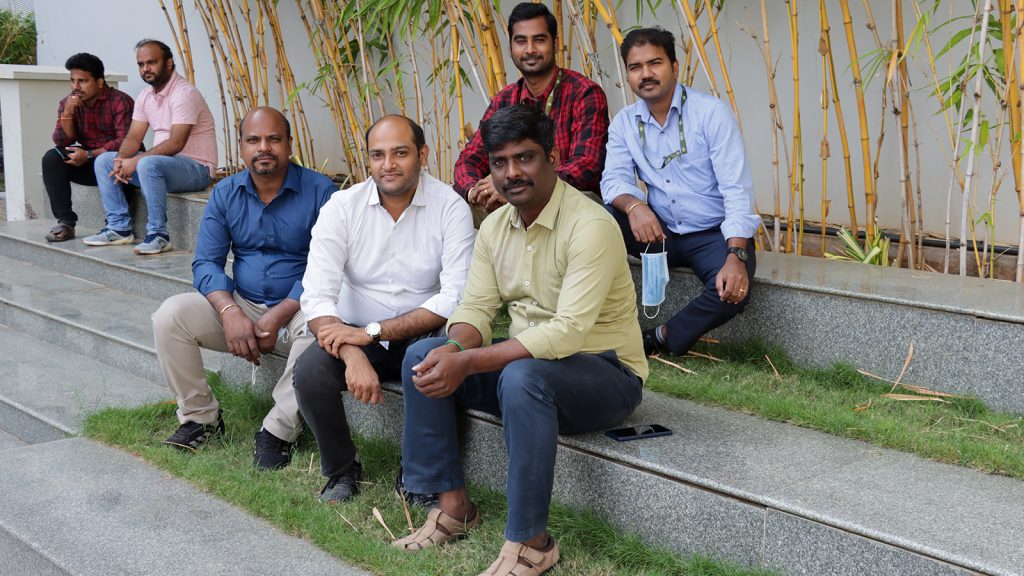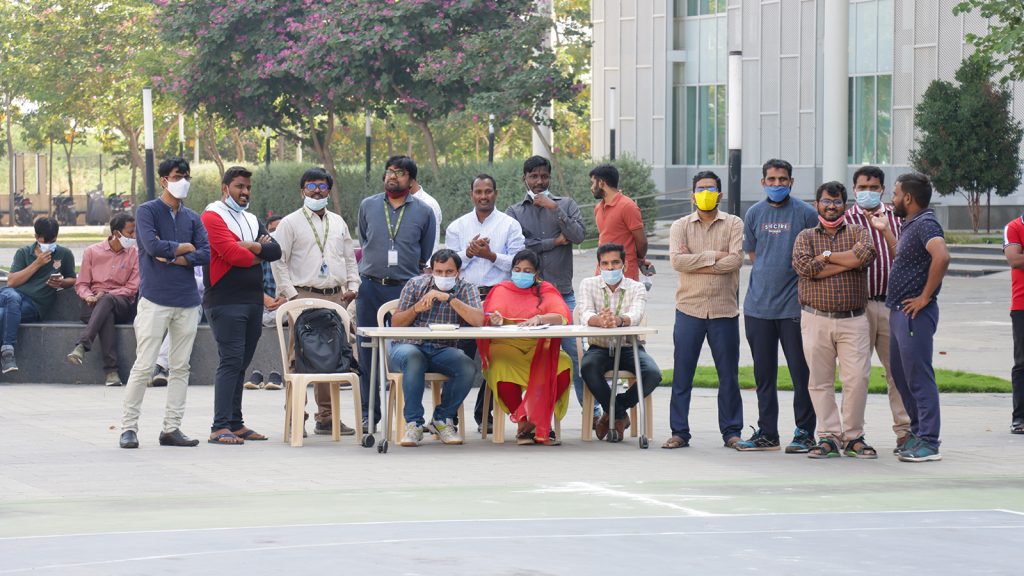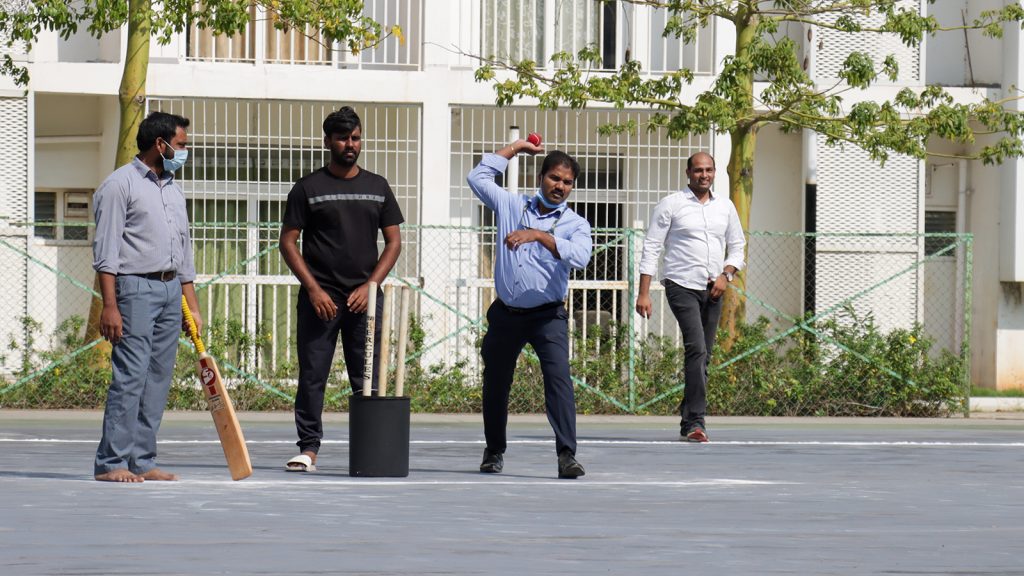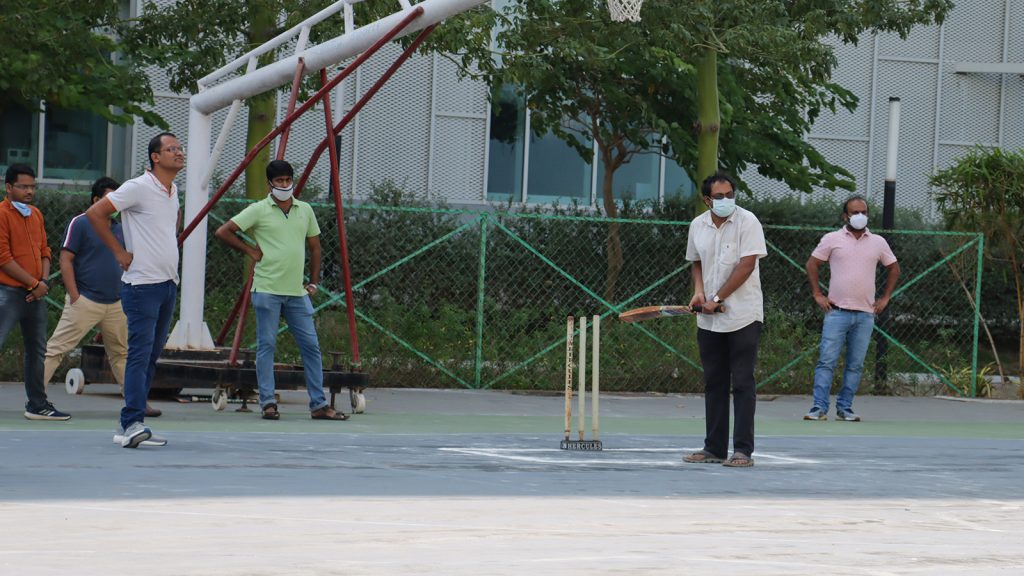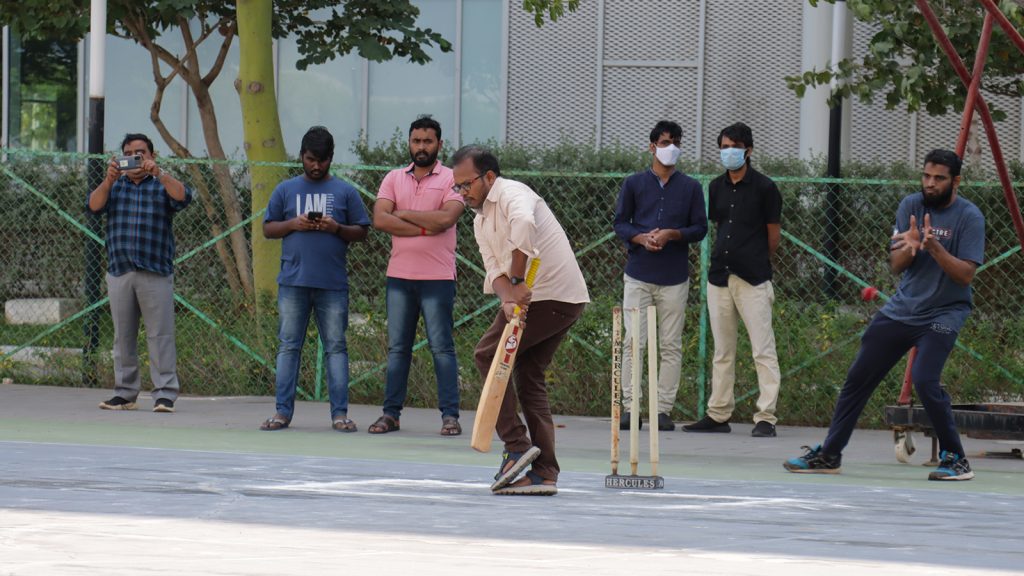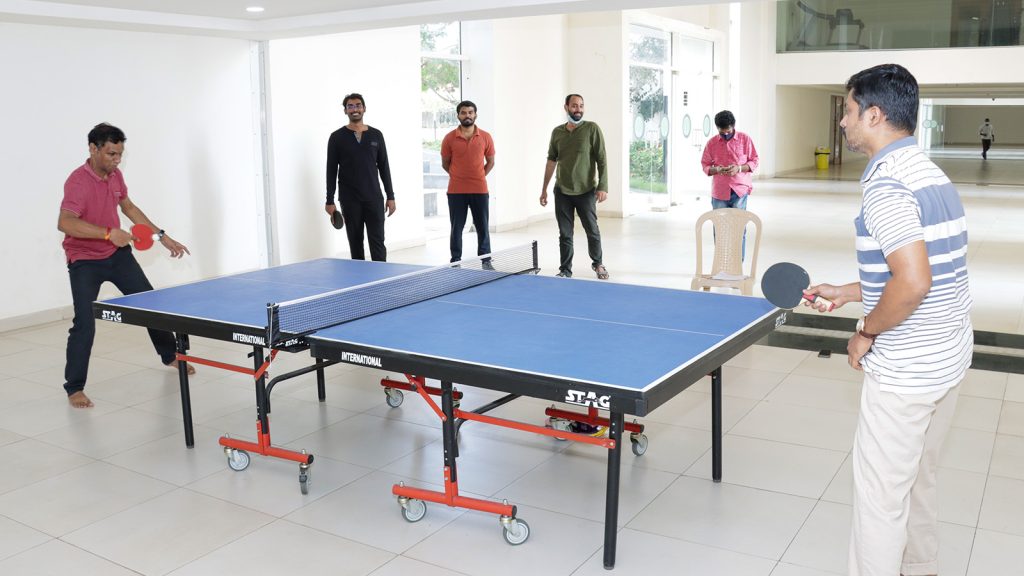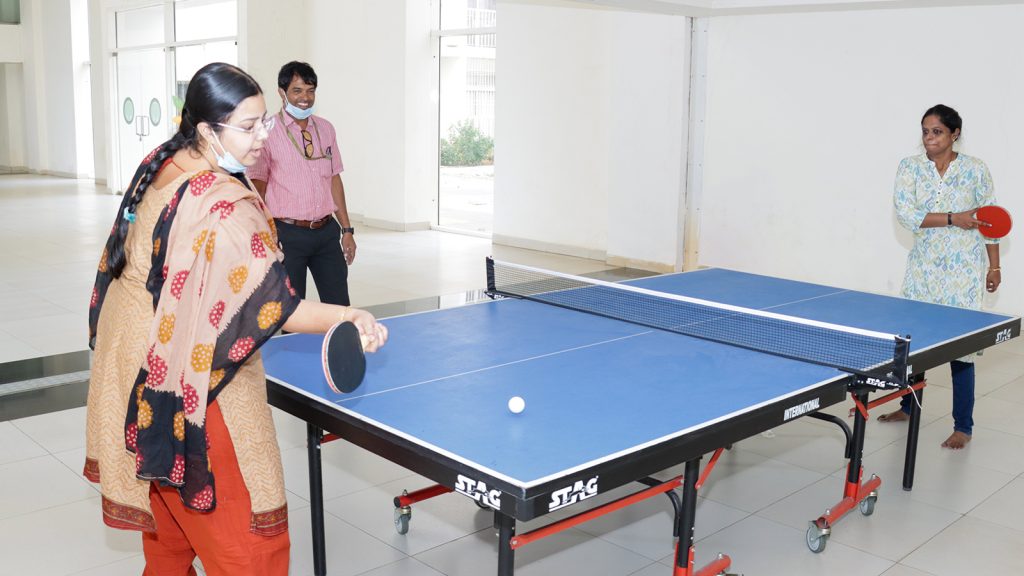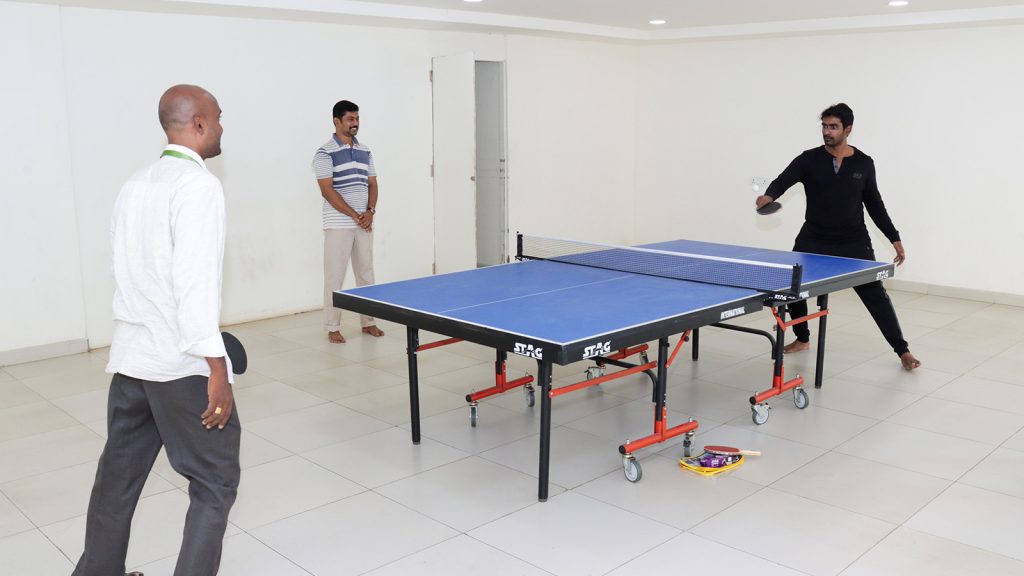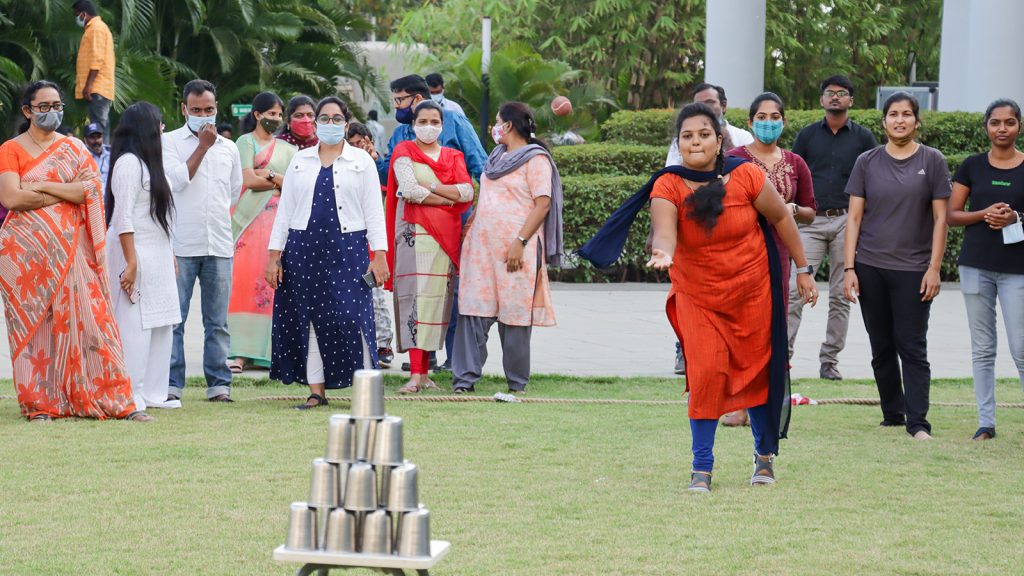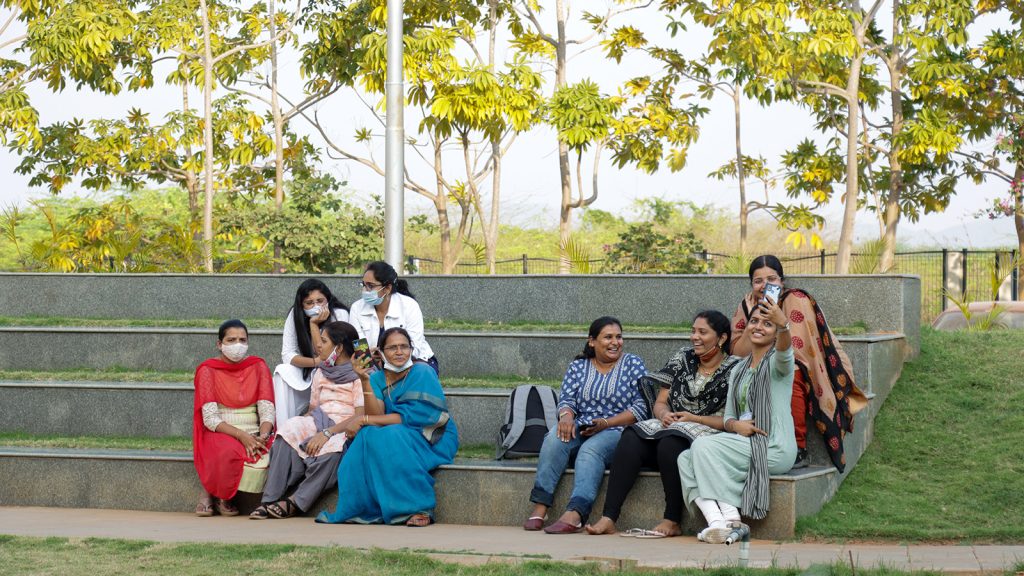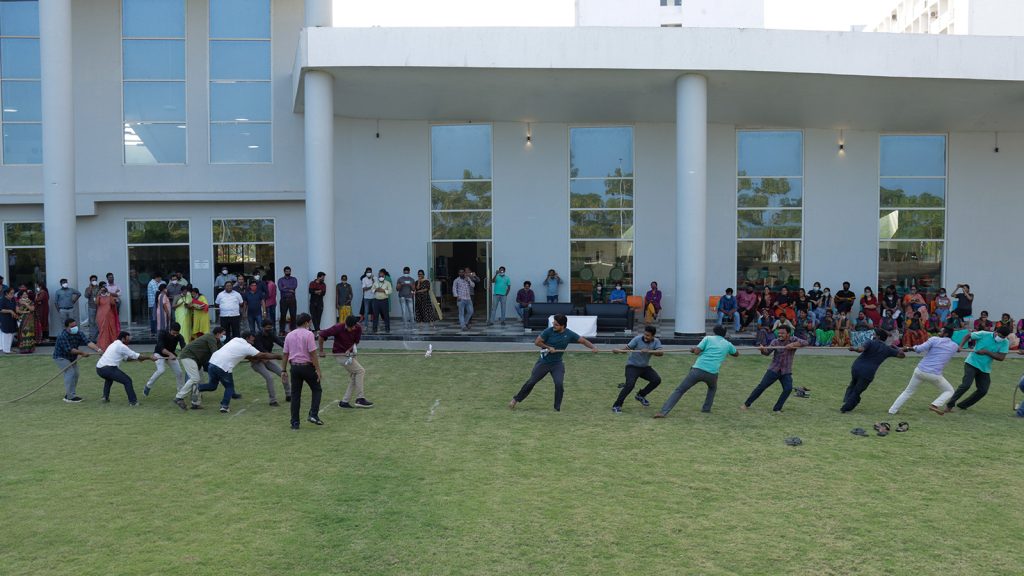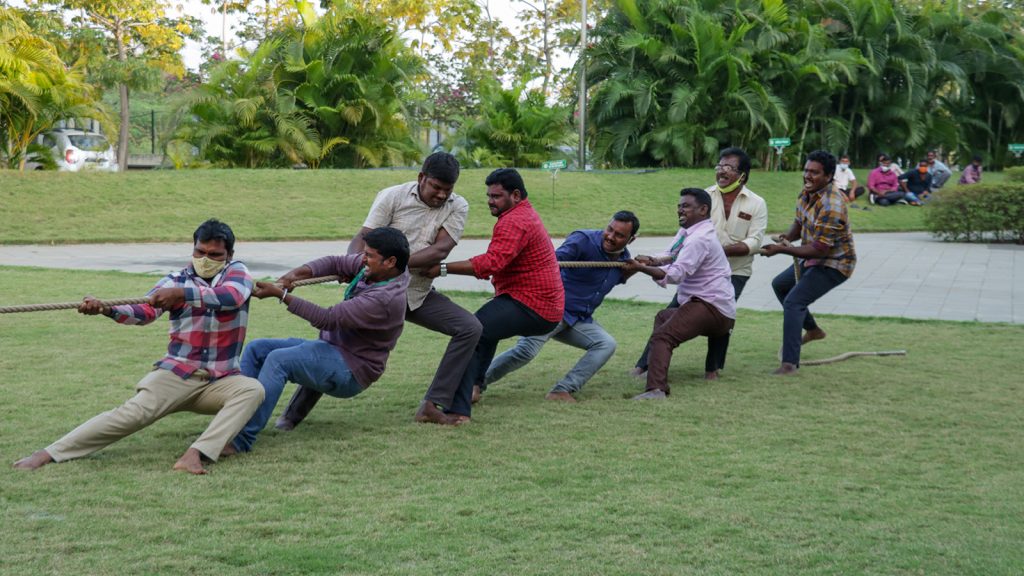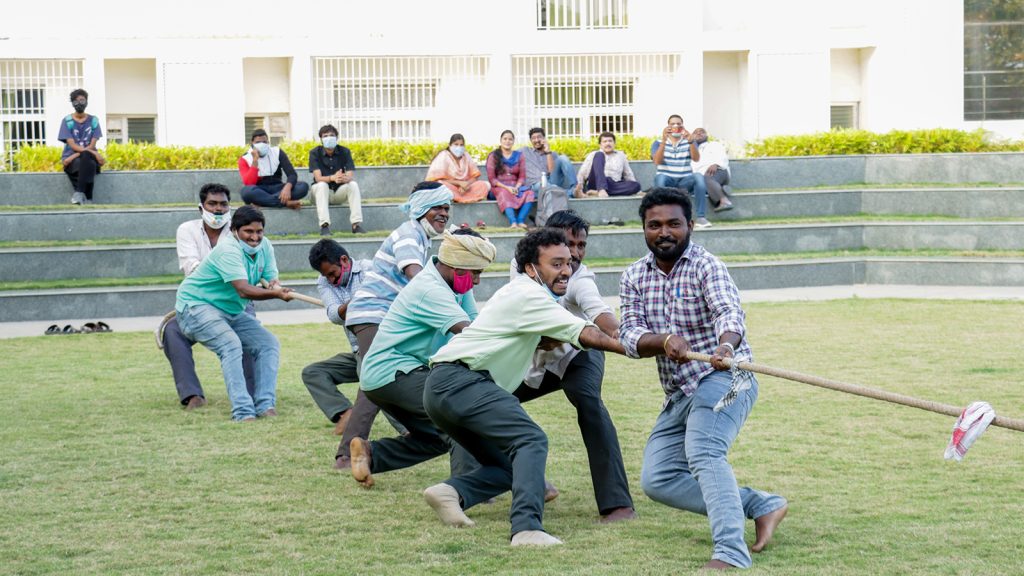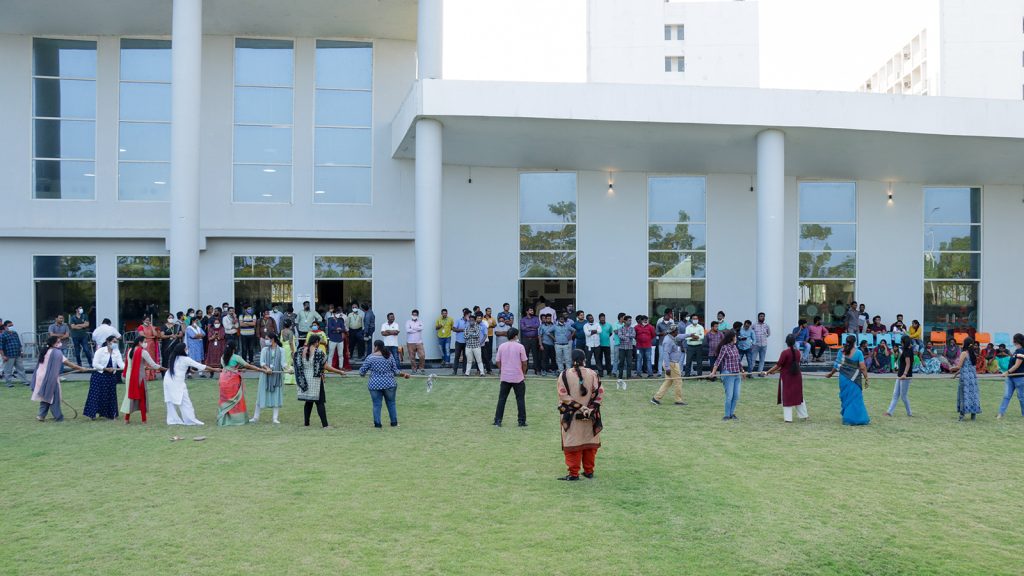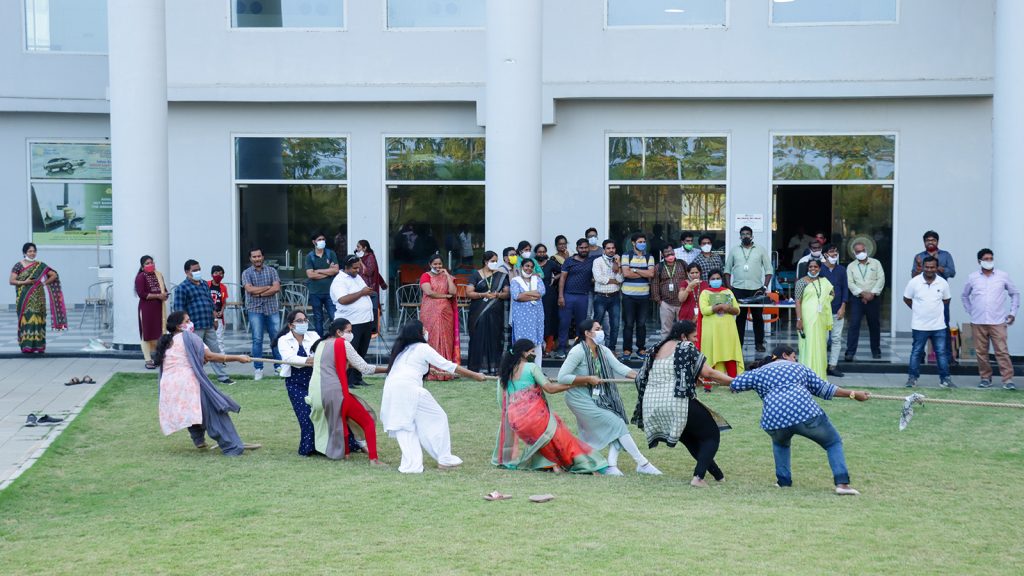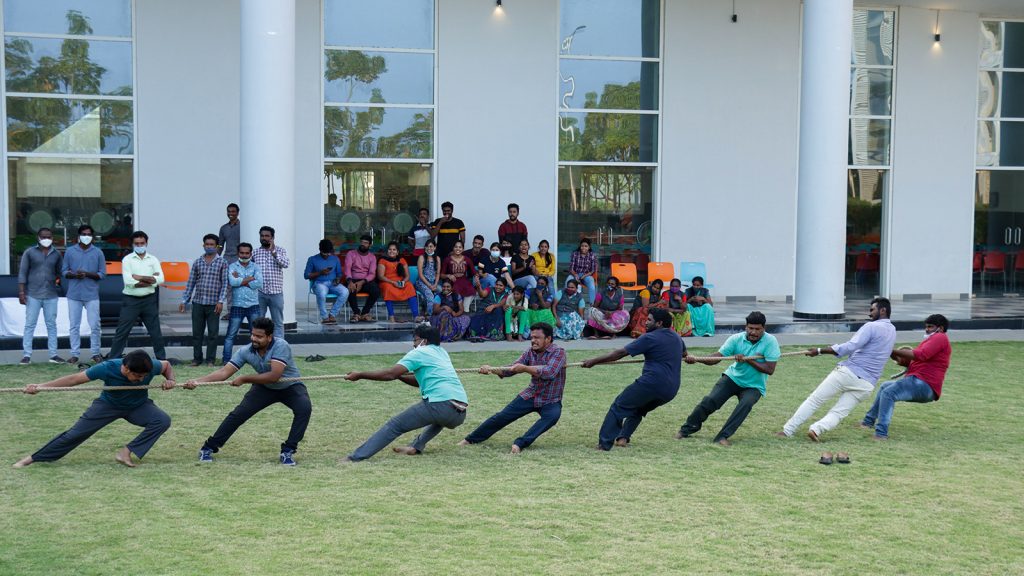SRM-AP All News
ALL News
- Dr Pankaj Pathak edited a book on sustainable environmental solutions January 19, 2022
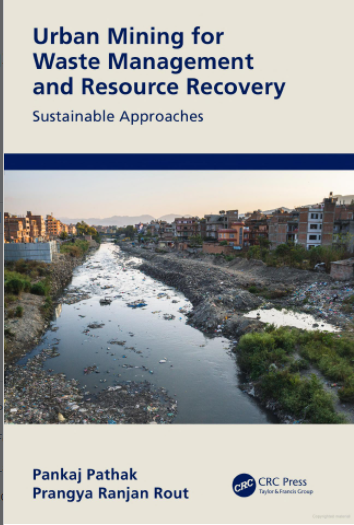 SRM University-AP is proud to announce that Dr Pankaj Pathak, Assistant Professor, The Department of Environmental Science, has edited a book titled, “Urban Mining for Waste Management and Resource Recovery: Sustainable Approaches” published by Routledge Publications. In an era of climate and global ecological crisis, our researcher has stepped up to promote sustainable environmental solutions.
SRM University-AP is proud to announce that Dr Pankaj Pathak, Assistant Professor, The Department of Environmental Science, has edited a book titled, “Urban Mining for Waste Management and Resource Recovery: Sustainable Approaches” published by Routledge Publications. In an era of climate and global ecological crisis, our researcher has stepped up to promote sustainable environmental solutions.About the Book:
Scientific management strategies can help in exploring anthropogenic wastes (human-made materials) as potential resources through the urban mining concept and be a panacea for sustainable development. This book covers five broader aspects of waste management and resource recovery in urban mining, including solid and liquid waste management and treatment. It explains sustainable urban mining approaches for the effective management of solid and liquid wastes and facilitates their conversion into secondary resources. Overall, this book provides details of urban mining and its different applications, including current waste management problems, practices, and challenges worldwide.
- Presents a holistic approach for urban mining considering various types of wastes
- Describes contemporary integrated approaches for waste management with specific case studies
- Provides technical, social, and environmental aspects of solid and liquid wastes
- Considers aspects of sustainability and a circular bio-economy
- Incorporates pertinent case studies on water and wastewater management
This volume caters to researchers and graduate students in environmental engineering, solid waste management, wastewater treatment, and materials science aiming for sustainable environmental solutions.
Click Here to learn more about the book from the Publisher’s site.
- Say Yes to Life No to Drugs January 13, 2022
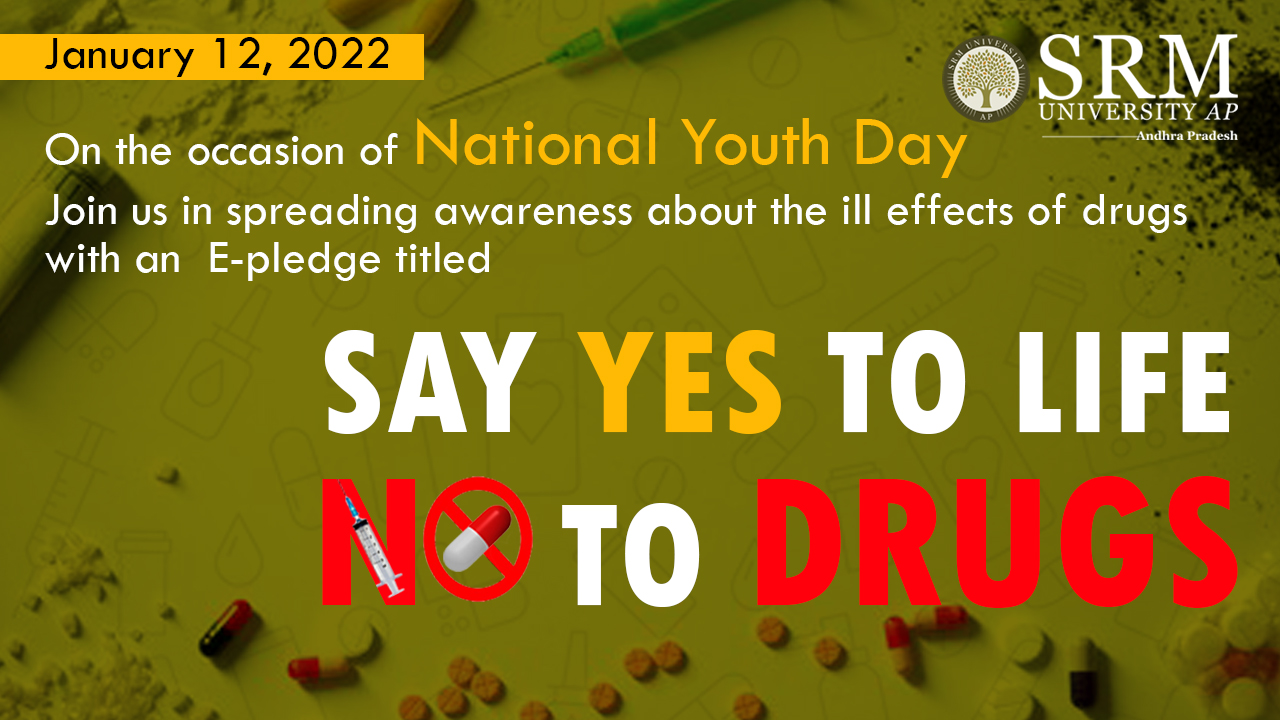 The Department of Student Affairs aimed to generate awareness and take an oath to “Say Yes to Life, No to Drugs”. On the occasion of the National Youth Day. A pledge was taken by the SRMAP Family to keep the youth from straying into the dark path of drug abuse.
The Department of Student Affairs aimed to generate awareness and take an oath to “Say Yes to Life, No to Drugs”. On the occasion of the National Youth Day. A pledge was taken by the SRMAP Family to keep the youth from straying into the dark path of drug abuse.SRM University-AP adheres to creating better environment for the future, better growth for the country and acknowledges the power of youth to achieve this. The degradation of the young into substance abuse hinders their growth and ability to reason. Hence the university would like to play its role in educating and advising the young against the harmful effects of using drugs and spread awareness about it.
- National Youth Day Celebrations 2022 Quiz Competition January 12, 2022
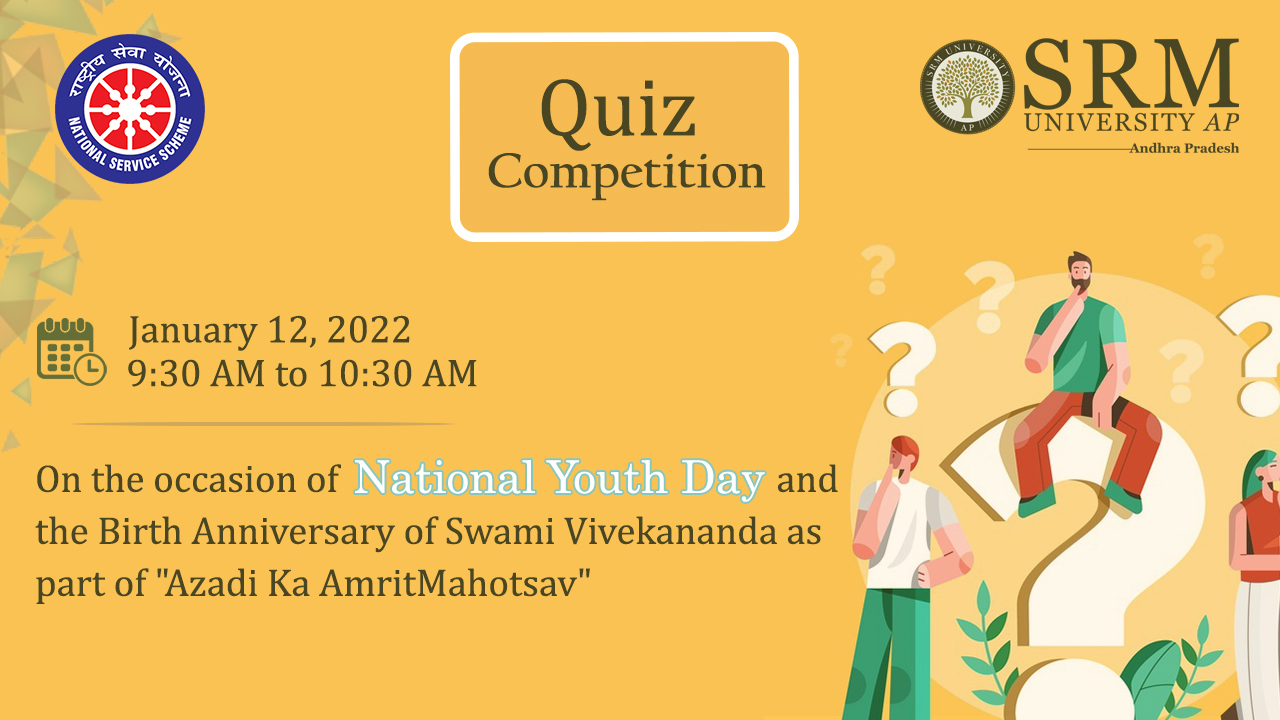 The Department of Student Affairs opened the National Youth Day Celebrations 2022 with an exciting and energetic atmosphere of healthy competition on January 12, 2022, at 9.30 am IST. Over 100 students participated in this event and the race to the top had onlookers at the edge of their seats.
The Department of Student Affairs opened the National Youth Day Celebrations 2022 with an exciting and energetic atmosphere of healthy competition on January 12, 2022, at 9.30 am IST. Over 100 students participated in this event and the race to the top had onlookers at the edge of their seats.The event was hosted by Ms Revathi Balakrishnan who participated in encouraging the students to give their best. The two student coordinators of the event, Ms Narra Pavani and Ms Anisha Yadlapalli amped up the lively atmosphere in the virtual space.
The National Youth Day is celebrated every year on the occasion of Swami Vivekananda’s birth anniversary. SRM University-AP organised the National Youth Day Celebrations 2022 as a part of “Azadi Ka Amrit Mahotsav”, an initiative by National Service Scheme.
The event was a learning experience for the organisers, the participants, and the observers alike. It shed light upon many well-known and less-known aspects of Swami Vivekananda’s life. It also brought to attention the youth power that our country currently possess.
The first position was obtained by PANCHAKARLA N B S ESWAR – BTech – CSE
The second position was obtained by KUNCHAM PAVAN VITESH – BTech – CSE
The third position was obtained by KOTA JAHNAVI – BTech – CSE
We congratulate the winners along with all other participants of the event for making it memorable, and for keeping the spirit and the momentum of the National Youth Day Celebrations 2022 high.
- Ms Lakshmi Bhargavi presents a paper at IACC-2021 hosted by University of Malta, Europe January 7, 2022
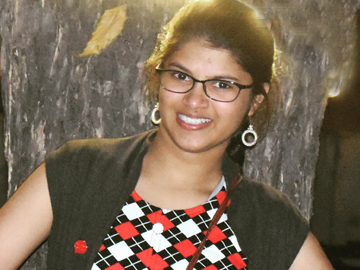 Being a researcher demands commitment, sustained effort, and a high level of inspiration. Ms Lakshmi Bhargavi from 3rd-year Computer Science Engineering has presented a paper titled “Application of distributed back propagation neural network for dynamic real-time bidding” at the 11th International Advanced Computing Conference (IACC-2021), hosted by the University of Malta, Europe. It is a reputed conference indexed in Scopus and DBLP, having H-index 25.
Being a researcher demands commitment, sustained effort, and a high level of inspiration. Ms Lakshmi Bhargavi from 3rd-year Computer Science Engineering has presented a paper titled “Application of distributed back propagation neural network for dynamic real-time bidding” at the 11th International Advanced Computing Conference (IACC-2021), hosted by the University of Malta, Europe. It is a reputed conference indexed in Scopus and DBLP, having H-index 25.The research is based on the backend of ad placement on websites which involves finances. The process involves finding the best deal between the dealer and the supplier. In the present system, the bid is prefixed, thereby reducing the possibility of optimal budget utilisation. In comparison, Ms Lakshmi’s research uses an ML algorithm, which is dynamic and learns from the previous bids. This research has resulted in 15% lower costs for the suppliers, thereby saving a lot of money and resulting in a better system.
Abstract — Programmatic buying, popularly known as real-time bidding (RTB), is a key ascendancy in online advertising. While data has become essential for targeting and ad performance, data businesses have become difficult to differentiate due to their proliferation, as well as limitations of attribution. This provides an opportunity for Big Data practitioners to leverage this data and use machine learning to improve efficiency and make more profits. In such an opportunity, the research came up with an application of a machine learning algorithm, distributed back propagation neural network, d-bpnn, to predict bid prices in a real-time bidding system. This paper depicts how d-bpnn is used to achieve less eCPM for advertisers while preserving win rate and budget utilisation.
The 11th International Advanced Computing Conference (IACC-2021) was hosted by the University of Malta, Europe, with an H-index of 25. The conference is indexed in Scopus and DBLP and in collaboration with Springer. A few selected papers will be published in SCOPUS/SCI Indexed journals. The presentation was held on 19th December 2021. It was an ideal platform for people to share views and experiences in Futuristic Research Techniques.
Let’s hear from Ms Lakshmi:
My university has been with me in every step taken towards this conference. I would like to thank the mentoring of Dr Priyanka throughout the writing and presentation of the paper. The immense support of SRM AP management, my professors, HOD, Pro VC sir and VC sir made me reach the level to write a paper confidently and show my knowledge to the world.
Continue reading →
I feel honoured to present a good paper at a global conference. The experience and connections I made through this conference are priceless. It gave me new insights into several other technical domains. I believe I gave my best at the unique opportunity given to me and hopefully will continue to deliver good work in future too. - Dr Lakhveer Singh published in Advanced Functional Materials for Engineered Nanoenzymes January 3, 2022
 The Department of Environmental Science is proud to announce that Dr Lakhveer Singh has published his paper titled, “Engineered Nanoenzymes with Multifunctional Properties for Next-Generation Biological and Environmental Applications” in Advanced Functional Materials with an impact factor of 18.50.
The Department of Environmental Science is proud to announce that Dr Lakhveer Singh has published his paper titled, “Engineered Nanoenzymes with Multifunctional Properties for Next-Generation Biological and Environmental Applications” in Advanced Functional Materials with an impact factor of 18.50.About the Paper:
Enzyme mimicking studies took on a new aspect as it turns out that inorganic nanomaterials could have intrinsic enzyme-like activities. The word nanozyme (nanoenzyme) was first coined to describe the ribonuclease-like activity of ligand functionalised gold nanoparticles in 2004. Since then, various research has been continued on nanomaterials with enzyme-like activity. Thus, nanoenzyme has come to describe nanomaterials with enzyme-like activity.
Abstract:
As a powerful tool, nanoenzyme electrocatalyst broadens the ways to explore bioinspired solutions to the world’s energy and environmental concerns. Efforts to fashion novel nanoenzymes or engineering nanoenzymes for effective electrode functionalisation is generating innovative, viable catalysts with high catalytic activity, low cost, high stability and versatility, and ease of production. High chemo-selectivity and broad functional group tolerance of nanoenzyme with an intrinsic enzyme-like activity make them an excellent environmental tool. The catalytic activities and kinetics of nanoenzymes that benefit the development of nanoenzyme-based energy and environmental technologies by effectual electrode functionalisation are discussed in this article. Further, deep insight on recent developments in the state-of-art of nanoenzymes either in terms of electrocatalytic redox reactions (viz. oxygen evolution reaction, oxygen reduction reaction, nitrogen reduction reaction and hydrogen evolution reaction) or environmental remediation/treatment of wastewater/or monitoring of a variety of pollutants. The complex interdependence of the physicochemical properties and catalytic characteristics of nanoenzymes are discussed, along with the exciting opportunities presented by nanomaterial-based core structures adorned with nanoparticle active-sites shell for enhanced catalytic processes. Thus, such modular architecture with multi-enzymatic potential introduces an immense scope of making its economical scale-up for multielectron-fuel or product recovery and multi-pollutant or pesticide remediation as reality.
Collaboration:
The assignment on “Engineered Nanoenzyme” was completed with the Department of Chemical and Biomolecular Engineering, Korea Advanced Institute of Science and Technology (KAIST), 291 Daehak-Ro, Yuseong-Gu, Daejeon 34141, the Republic of Korea, along with other universities.
Social and Industrial Implications:
Trends of nanoenzyme are replacing conventional enzymes, particularly in a microbial bioelectrofuel biosystem, as cheap and efficient electrocatalysts. In this account, various strategies from altering scaffold to point alteration and iterative targeted tailoring have been applied to improve the enzyme-like activity and selectivity of the artificial enzymes.
Future Plans:
Strategies need to be devised to increase the mass loading of both homogenous and heterogeneous nanoenzyme for higher current density. Though, area of nanoenzyme is in its growing stage, engineering nanoenzyme with improved catalytic performance comparable to or even higher than that of the natural enzyme is one of the most concerning issues at this moment. Besides, the future breakthrough in nanoenzyme technology will lead to the development of novel catalysts with wider applications in multiple disciplines.
- Student ready to climb Mount Everest January 3, 2022
Continue reading →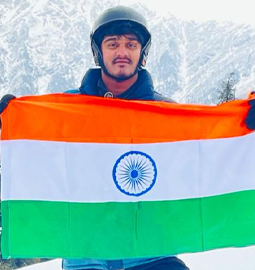 The summit will start in April 2022 in Kathmandu
The summit will start in April 2022 in Kathmandu
G Ram Dheeraj, third-year Civil Engineering at SRM University-AP, has been selected to climb Mount Everest, the world’s highest mountain. The adventurous peak climbing expedition will begin in April 2022. He has already climbed three major peaks in the Himalayan range and is selected for the summit by the Asian Trekking Pvt Ltd. The mountains that he has set foot on are Shitindhar Peak (5358 m), Friendship Peak (5287 m) and Deo Tibba Peak (6001 m). He has also completed a mountaineering course from ABVIMAS in Kulu Manali. Ram Dheeraj, who hopes to reach the summit of Mt. Everest through rigorous preparation, seeks kind sponsors to come forward and fund the expenses of ₹27 lacs. Prof V S Rao, Vice-Chancellor; Prof Narayana Rao, Pro-Vice-Chancellor; and the management of SRM University-AP, congratulated Ram Dheeraj for his exceptional enthusiasm to conquer extremely high altitudes. - Welcoming 2022 with joy, hope, and fun January 1, 2022
On Saturday morning, students, faculty and administrative staff members at SRM University-AP welcomed the new year with colourful celebrations on campus. Vice-Chancellor Prof V S Rao cut the New year special cake and addressed the gathering. “We shall enter the new year with the hope that pandemic will be endemic in 2022”, he said. He also suggested that everyone take steps in a planned manner to receive the success they hope for in the new year.
Dr R Premkumar, the Registrar, expressed hope that the university would move towards higher standards under the supervision of Professor B V Babu, Dean of the School of Engineering and Sciences. The organisers and participants of the event and various game activities adhered strictly to the Covid-19 protocol. Prizes were given away to the winners of various competitions.
The event was attended by Registrar-Dr R Premkumar, Dean-Prof B V Babu, Controller of Examinations- Dr Vinayak Kalluri, Directors-Mrs Suma N, Dr K Mohan, Wg Cmdr Venkataachalam Sekkappan, Prof Y Siva Sankar and others.
Continue reading → - STEM-Research Society Best Paper Award to faculty and undergraduate students January 1, 2022
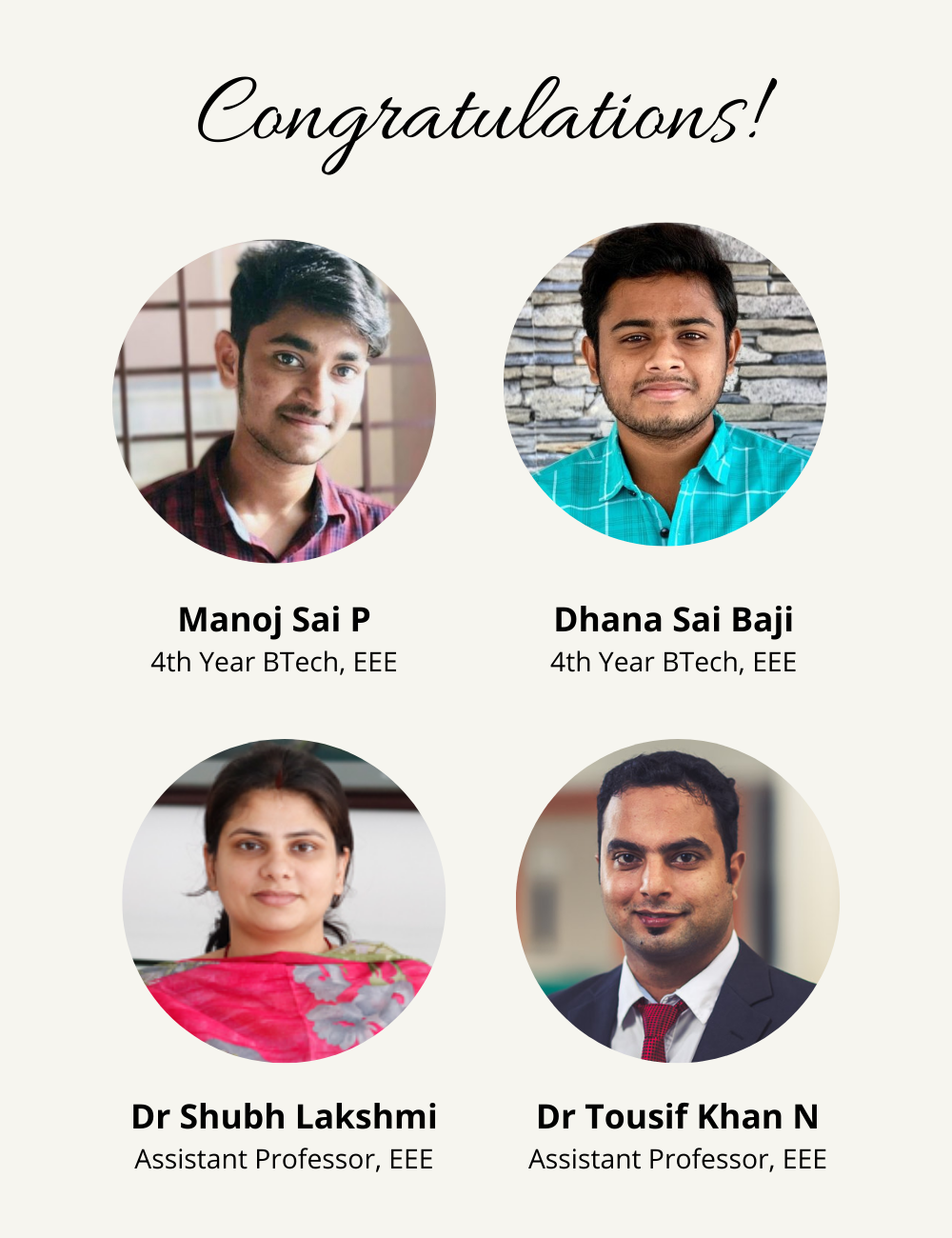 “As an undergraduate student, I initially faced many difficulties selecting the area of interest, analysing and organising a paper, and academic writing skills. The continuous support from faculty at SRM university-AP helped me overcome these issues. This achievement would have been impossible without the support and efforts of my faculty mentors. My heartful gratitude to Dr Shubh Lakshmi madam and Dr Tousif Khan N sir for their kind support and encouragement in research work. I am grateful to start my research career under their guidance. Also, the management encourages and supports us every time in every possible way by providing scholarships.”
“As an undergraduate student, I initially faced many difficulties selecting the area of interest, analysing and organising a paper, and academic writing skills. The continuous support from faculty at SRM university-AP helped me overcome these issues. This achievement would have been impossible without the support and efforts of my faculty mentors. My heartful gratitude to Dr Shubh Lakshmi madam and Dr Tousif Khan N sir for their kind support and encouragement in research work. I am grateful to start my research career under their guidance. Also, the management encourages and supports us every time in every possible way by providing scholarships.”
–Pendem Manoj SaiA paper titled “Exhaustive Search Approach to Place PV in Distribution Network for Power Loss Minimization” has been awarded STEM-Research Society Best Paper Award in the recently held conference, Soft Computing: Theories and Applications (SoCTA)-2021, at the Indian Institute of Information Technology, Kota on the dates December 17-19, 2021. The authors of the paper are- P Manoj Sai, M Dhana Sai Baji, Dr Shubh Lakshmi, and Dr Tousif Khan Nizami from the Department of Electrical and Electronics Engineering, School of Engineering and Sciences, SRM University-AP, Andhra Pradesh, India. The paper is selected for publication in Lecture Notes in Networks and Systems, Springer (Indexed in SCOPUS).
This paper proposes an exhaustive search approach to determine the best location and size of PV placement for power loss minimisation of radial distribution networks. In this approach, the network power loss is determined by placing PV in each location, one at a time, and the size of PV in the same location is varied between a set minimum and maximum limits. The combination of location and size of PV, which provide the minimum network power loss, can be the best location and size of PV for power loss minimisation of radial distribution networks. The forward-backwards sweep load flow algorithm with the PV model is used to determine the power loss for each combination of location and size of PV.
The paper was presented by Mr P Manoj Sai, a BTech EEE 4th year student from SRM University-AP, Andhra Pradesh. He is thrilled to receive the best paper award and extended his gratitude to Dr Tousif Khan N, the Head of the Department, and Dr Shubh Lakshmi, Assistant professor in the Department of Electrical and Electronics Engineering, for their continuous guidance. Further, he extended his thanks to the management and Pro Vice-chancellor of SRM University-AP for providing financial support.
Continue reading → - Ms Tanoogna bags three gold medals at National Indoor Archery Championship-2021 December 31, 2021
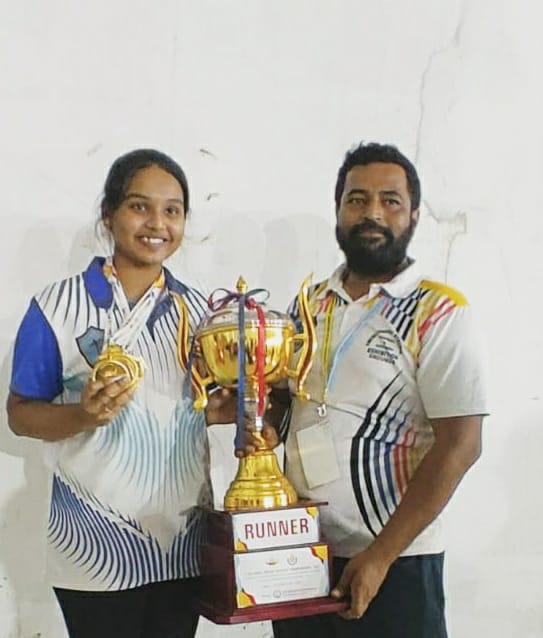 Mallarapu Tanoogna, a third-year civil engineering student at SRM University-AP, has excelled at National Indoor Archery Championship-2021, winning three gold medals and finishing 8th in the National Open Ranking, representing Andhra Pradesh. The National Field Archery Development & Welfare Association in Salem, Tamilnadu, hosted the inaugural National Indoor Archery Championship-2021 on 25th and 26th December. Archery players from the South Indian states of Kerala, Tamil Nadu, Karnataka, Andhra and Telangana participated in the competition.
Mallarapu Tanoogna, a third-year civil engineering student at SRM University-AP, has excelled at National Indoor Archery Championship-2021, winning three gold medals and finishing 8th in the National Open Ranking, representing Andhra Pradesh. The National Field Archery Development & Welfare Association in Salem, Tamilnadu, hosted the inaugural National Indoor Archery Championship-2021 on 25th and 26th December. Archery players from the South Indian states of Kerala, Tamil Nadu, Karnataka, Andhra and Telangana participated in the competition.Ms Tanoogna, representing Andhra Pradesh from SRM AP has been training to participate in indoor and outdoor archery championships for a year. She won gold medals in the Senior Recurve women individual, women team and mixed team categories and is ranked 8th in the national archery rankings.
“It is a pride moment that our student wins gold medals and opens national ranking,” said university Vice-Chancellor-Prof V S Rao, congratulating Ms Tanoogna. Registrar-Dr R Premkumar, Deans, and faculty members congratulated Ms Tanoogna and promised her all the support for attending more national and international championships in the future.
Continue reading → - Dr Nimai Mishra on The Impact of Shell Thickness on Charge Transfer Dynamics in Green Emitting Core/Shell Giant Quantum Dots December 29, 2021
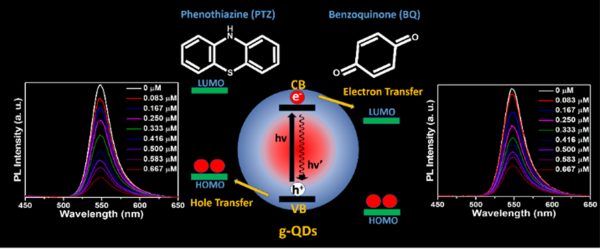 Dr Nimai Mishra, Assistant Professor, Department of Chemistry, SRM University-AP, Andhra Pradesh, along with his research group comprising of students pursuing PhD under him, Mr Rahul Singh, Mr Syed Akhil, and Ms V. G. Vasavi Dutt, have published a research article titled “Study of Shell Thickness Dependent Charge Transfer Dynamics in Green Emitting Core/Shell Giant Quantum Dots” Nature Index journal, “Inorganic Chemistry” published by The American Chemical Society having an impact factor of 5.1.
Dr Nimai Mishra, Assistant Professor, Department of Chemistry, SRM University-AP, Andhra Pradesh, along with his research group comprising of students pursuing PhD under him, Mr Rahul Singh, Mr Syed Akhil, and Ms V. G. Vasavi Dutt, have published a research article titled “Study of Shell Thickness Dependent Charge Transfer Dynamics in Green Emitting Core/Shell Giant Quantum Dots” Nature Index journal, “Inorganic Chemistry” published by The American Chemical Society having an impact factor of 5.1.About the paper:
The superior photostability enables green-emitting graded alloy core/shell giant quantum dots (g-QDs) for optoelectronic application. However, it is essential to understand how the shell thickness affects interfacial charge separation. This work explores the impact of shell thickness on photoinduced electron transfer (PET) and photoinduced hole transfer (PHT) with an electron acceptor benzoquinone and a hole acceptor phenothiazine, respectively. The four graded alloy core/shell green-emitting g-QDs with different shell thicknesses were synthesised. The PET and PHT rate constants were obtained from photoluminescence and PL-lifetime decay measurement. Our study concludes that g-QDs with a diameter ~7.14 show a substantial improvement in charge transfer than g-QDs ≥ 8.5 nm in diameter. Similarly, the PET and PHT rates are 3.7 and 4.1 times higher for 7.14 nm g-QDs than for the 10.72 nm sample. The calculated electron and hole transfer rate constant (ket/ht) of g-QD with 7.14 nm in diameter are 10.80 × 107 s-1 and 14 × 107 s-1, which shows 8.5 and 8 times higher compared to g-QDs with a 10.72 nm in diameter.
Industrial implications:
More importantly, these results highlight the impact of shell thickness on the excited state interactions of green-emitting g-QDs and conclude that g-QDs with a relatively thin shell can be a better choice as photoactive materials for photocatalysts, photodetectors, and solar cells.
Want the complete details of Dr Nimai Mishra’s paper?
Continue reading →


